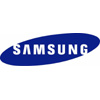
Samsung has begun production of 20nm DDR3 memory chips


Samsung has taken a huge step forward and has certainly gained a big advantage over its competitors as it was the first to start mass production of MLC NAND flash chips with 20nm manufacturing technology.
It is well known that the memory market is currently going through a minor crisis as too much market competition and declining customer interest have resulted in overproduction, so stocks have accumulated and manufacturers are already forced to sell their products at ever lower profits.

Now Samsung can start producing much more efficiently at 20nm, as it can access up to 50% more chips on the surface of a silicon wafer, of course some of the worse yields at the start of production will probably even more than offset more efficient production. On the other hand, the consumption of inserts is also greatly affected by the change in technology, as its consumption can be 40% less. This can make it extremely attractive in addition to the current market trends, as the main market has shifted towards portable machines, where the lowest possible consumption is needed to increase uptime, and with the development of 20 nm technology, mobile phones can even appear. chips.

Samsung has outsourced the new technology to the new factory, the announcement was also held here, and production will also begin here. A factory called Line-16 is located in Gyeonggi Province, South Korea at a Samsung-owned factory called Nano City. The huge complex occupies an area of 20 hectares and is planned to produce 10000 pieces of 300 mm wafer per month. With this, the largest such factory opened. Production of the two gigabit chips will start in the first round, but I would like to start producing the 4 gigabit memories by the end of the year. The stores come in 4GB, 8GB, 16GB and 32GB packages. And at the same time, we have to reckon with newer green DDR3 modules, as these average DRAMs also consume less than current low-power products.
Source: techpowerup













